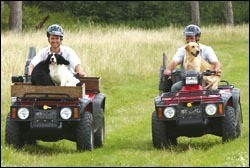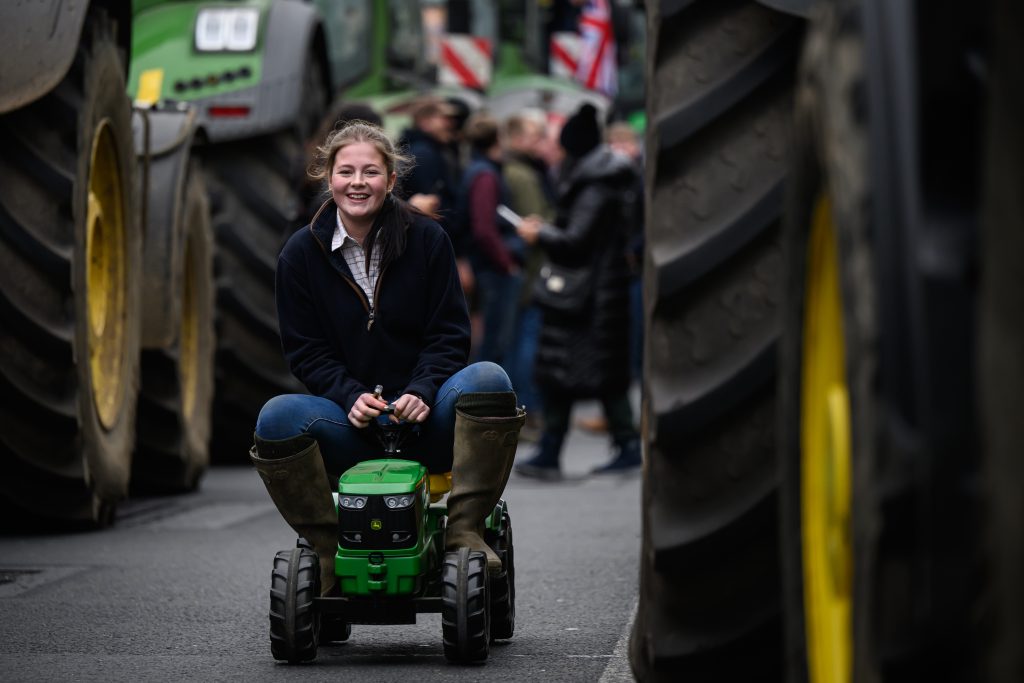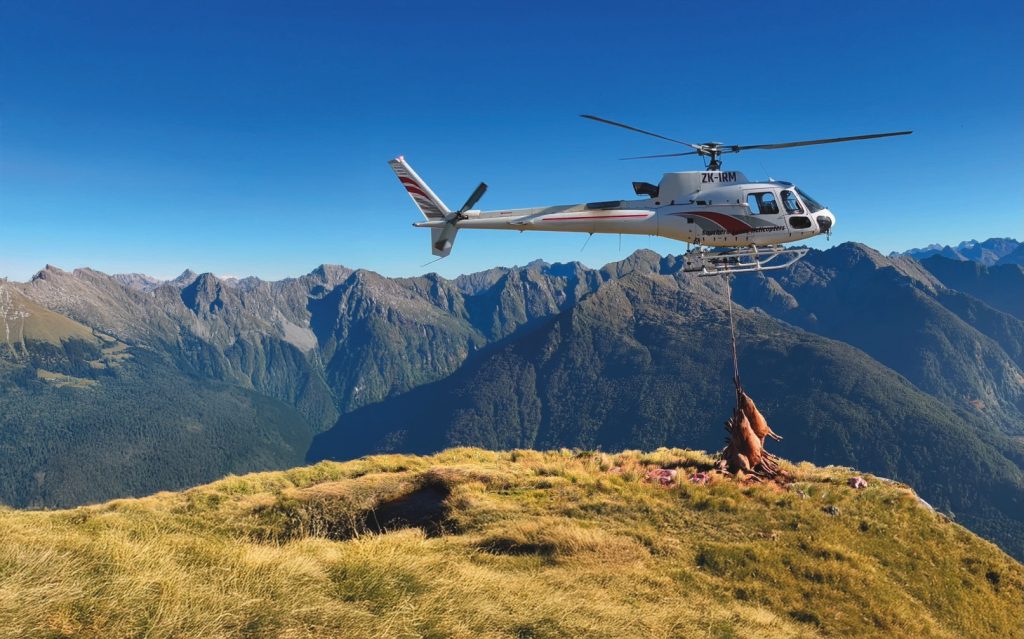Win CENS ProFlex DX5 earplugs worth £1,149 – enter here
The risks of riding quad bikes
Quad bikes may have revolutionised keepers' and stalkers' lives, but the accident rate is alarmingly high. Here we look at the risks of driving ATVs and how easily injury can occur.

Over the past 10 years, four-wheeled all-terrain vehicles (ATVs or quad bikes) have made the lives of keepers, stalkers, shepherds and stockmen more convenient through their manoeuvrability, versatility, speed and low fuel consumption.
Quads are now an indispensable tool, used daily to check traps, remove deer from the hill, feed gamebirds, cattle, horses or sheep, mend fences or carry grit on to a grouse moor.
Usually these bikes are driven along a route that the rider knows well, at sensible speeds and with the correct safety equipment in place. However, accidents happen with alarming regularity. Helmets are left behind, tyres grow worn or lose pressure, brakes wear thin or a driver’s overconfidence leads to a risky manoeuvre. ATV keys are also left in the hands of unqualified drivers, such as teenagers or children. These lapses in safety can all too often lead to tragic consequences.
Malcolm Fieldsend, national co-ordinator for the National Gamekeepers’ Organisation, told of one such tragedy that befell a 21-year-old keeper on his estate in 2003.
The underkeeper held all the right paperwork and did an ATV course five months before the accident. “He was a fine young keeper and well respected on the estate,” said Malcolm. “The inspectors think he must have driven along a stone track at a fair lick and come down on to a grass verge on a tight corner. He must have tried to make it back up off the camber on to the track, but the front wheels hit a hidden log in the grass and he was thrown forward. His head hit a tree. If he had been wearing a helmet it may have saved his life, though we can never be sure.”
While the bikes are replaced on the estate every two years, Malcolm admits that they did take a bit of a hammering from the constant use and that tyre pressures were uneven. “The lad had all the right training and certificates, so no charges were brought against the estate,” said Malcolm. “It was a tragic accident but no-one could have foreseen it. You don’t think how dangerous these machines can be until it affects someone close to you. ATVs are extremely useful tools, however, and given the amount of use they get throughout the country, there are relatively few accidents. As long as the driver is constantly undertaking his own risk assessment then there’s no reason why a quad should be any more dangerous than a 4×4.”
Quad bike accidents have filled a sizeable number of column inches in recent years following a spate of high-profile injuries. Rock legend, Ozzy Osbourne, was in a coma for eight days after breaking eight ribs and puncturing a lung in the grounds of his Buckinghamshire mansion, in 2003, following a tumble off his recreational ATV. He had not been wearing a helmet at the time. “I’ll never go near one of those damn bikes again,” he said afterwards
In an interview with the Sunday Mirror, he said: “The thing nearly killed me. I am lucky to be here today and not paralysed.”
In 1998, comedian, Rik Mayall, was seriously injured after crashing his quad bike in wet weather near his farm in Devon. After being lifted by helicopter to hospital, the star of The Young Ones was heavily sedated to prevent movement that could have caused pressure on his brain. Then, in 2005, quads were back in the newspapers, following the death of 20-year-old Daniel Brookman at the Gatcombe Park Horse Trials, in Gloucestershire, after a bike fell on his chest.
His best friend, who had been giving Daniel a lift when the quad lost control, was later charged with careless driving.
For the seventh consecutive year, work-related transport has caused more deaths in agriculture and forestry than any other category, according to the government’s Health & Safety Executive (HSE). While the HSE often comes under attack for being the chief nanny in the state crèche, its statistics do make uncomfortable reading for quad bike drivers.
Of the 16 transport-related deaths in 2005 to 2006, the majority were caused when people were struck by a moving vehicle or by a vehicle that had overturned, crushing and trapping the victim or causing them to fall out of the vehicle. Six incidents involved tractors; five involved an ATV; a further three cases occurred when a telescopic handler or loader overturned or moved forward, crushing the victim and the remaining two were struck by trailers attached to vehicles.
There was a recurring theme in the accidents involving quad bikes. One 48-year-old employee was killed when the ATV he was riding overturned. He lost control of the vehicle as he approached the farmyard. The front tyres were worn and were about to be replaced during a vehicle service, though the worn condition of the tyres was not thought by the vehicle examiner to be a significant factor in causing the accident. The driver was not wearing any form of protective headgear and sustained fatal head injuries when the vehicle overturned.
A 52-year-old self-employed farmer died when his quad bike ran head-on into a wall. He was riding a quad bike loaded with fencing posts across a slope. It is assumed, since there were no witnesses, that the posts moved, causing the farmer to lose control of the vehicle. He was not wearing any head protection. A 61-year-old self-employed farmer was killed when he fell from a quad bike, which overturned after he rode it up a steep field and accelerated over cattle ruts. The front wheels lifted and the acceleration caused the bike to rear up and overturn. He was not believed to be wearing a helmet and suffered head and neck injuries, as well as a broken elbow.
A 43-year-old farm worker was discovered underneath a quad bike. He was using a quad bike to bring in cattle for afternoon milking and was not wearing a helmet. He died from head injuries.
A five-year-old child was hit and crushed against a gatepost by an ATV. Her mother was tending a horse in a field, accompanied by her two children. She entered the field with her youngest child, leaving the ATV’s engine running. It appears that her other daughter may accidentally have lent forward and operated the accelerator, causing the ATV to drive forward, hitting the youngest child and trapping her against the gatepost.
Fortunately, not every quad bike mishap ends in a fatality, but statistics show that minor injuries have also risen exponentially with the popularity of the ATV. In 1998, 1,200 patients visited Accident & Emergency centres across the UK because they had hurt themselves on a quad bike. By the turn of the century that number had reached 3,200, and by 2002 it was more than 4,200.
“The HSE does not release A&E figures any more, but it makes sense that the number will have grown since then,” said Roger Vincent, a spokesman for the Royal Society for the Prevention of Accidents. “The greatest problem with quads is that owners will drive them too fast on uneven terrain without first learning the basic skills on flat, open terrain. Drivers must remember that this is a professional piece of equipment, rather than a toy to tear about on with a friend on the back as though they are on a fairground ride.”
Roger quoted the example of Thomas Crombie, a father of two, from Lanarkshire, who died in an accident on a quad bike bought only two hours earlier. The 37-year-old suffered fatal injuries when the 200cc machine struck a brick pillar. He was driving quickly around an industrial yard when he attempted a tight turn. The bike turned over and he was thrown head first into the brick pillar. He was not wearing a helmet.
ATV manufacturers recommend that their customers sit an EASI (European All-Terrain Vehicle Safety Institute) test when they buy a quad bike. For more information, visit www.quadsafety.org
THE GOLDEN RULES OF SAFETY
1. Take an EASI rider or other approved training course.
2. Always wear an approved helmet, goggles, gloves and other protective gear.
3. Never ride under the influence of alcohol or other drugs.
4. Avoid paved surfaces whenever and wherever possible.
5. Never ride on public roads unless your machine is a Quadricycle that has been specifically manufactured for this purpose and complies with the relevant type approval code for that specific model of Quadricycle, and you hold the correct type of driving licence and insurance.
6. Read your machine’s owner’s manual and familiarise yourself with the content of all warning labels displayed on your ATV.
7. Never carry a passenger unless your machine has been specifically manufactured to accommodate one.
8. Ride an ATV that is right for your age and experience.
9. Supervise riders younger than 16 years old: ATVs are not toys.
10. Ride only on designated trails/riding areas and at a safe speed. Always make sure you have the landowner’s permission
Related Articles
Get the latest news delivered direct to your door
Subscribe to Shooting Times & Country
Discover the ultimate companion for field sports enthusiasts with Shooting Times & Country Magazine, the UK’s leading weekly publication that has been at the forefront of shooting culture since 1882. Subscribers gain access to expert tips, comprehensive gear reviews, seasonal advice and a vibrant community of like-minded shooters.
Save on shop price when you subscribe with weekly issues featuring in-depth articles on gundog training, exclusive member offers and access to the digital back issue library. A Shooting Times & Country subscription is more than a magazine, don’t just read about the countryside; immerse yourself in its most authoritative and engaging publication.







